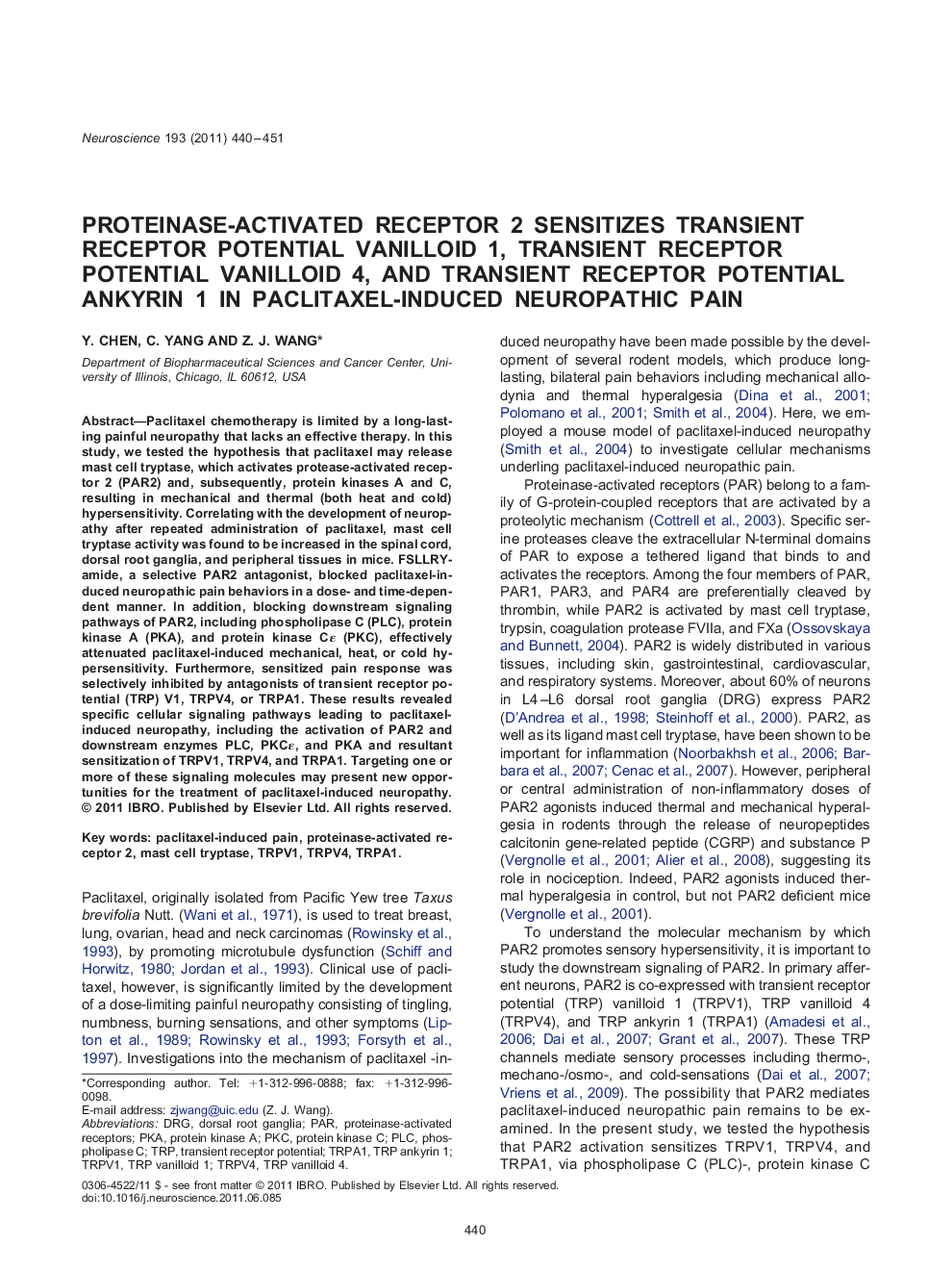| Article ID | Journal | Published Year | Pages | File Type |
|---|---|---|---|---|
| 4338772 | Neuroscience | 2011 | 12 Pages |
Paclitaxel chemotherapy is limited by a long-lasting painful neuropathy that lacks an effective therapy. In this study, we tested the hypothesis that paclitaxel may release mast cell tryptase, which activates protease-activated receptor 2 (PAR2) and, subsequently, protein kinases A and C, resulting in mechanical and thermal (both heat and cold) hypersensitivity. Correlating with the development of neuropathy after repeated administration of paclitaxel, mast cell tryptase activity was found to be increased in the spinal cord, dorsal root ganglia, and peripheral tissues in mice. FSLLRY-amide, a selective PAR2 antagonist, blocked paclitaxel-induced neuropathic pain behaviors in a dose- and time-dependent manner. In addition, blocking downstream signaling pathways of PAR2, including phospholipase C (PLC), protein kinase A (PKA), and protein kinase Cε (PKC), effectively attenuated paclitaxel-induced mechanical, heat, or cold hypersensitivity. Furthermore, sensitized pain response was selectively inhibited by antagonists of transient receptor potential (TRP) V1, TRPV4, or TRPA1. These results revealed specific cellular signaling pathways leading to paclitaxel-induced neuropathy, including the activation of PAR2 and downstream enzymes PLC, PKCε, and PKA and resultant sensitization of TRPV1, TRPV4, and TRPA1. Targeting one or more of these signaling molecules may present new opportunities for the treatment of paclitaxel-induced neuropathy.
▶Paclitaxel increased mast cell tryptase activity, an agonist of PAR2. ▶Blocking PAR2 or its downstream signaling pathways (PLC, PKA, and PKCε), attenuated paclitaxel-induced pain. ▶Blocking TRPV1, V4, and A1 differentially attenuated paclitaxel-induced mechanical, heat, or cold hypersensitivity.Figure optionsDownload full-size imageDownload high-quality image (186 K)Download as PowerPoint slide
